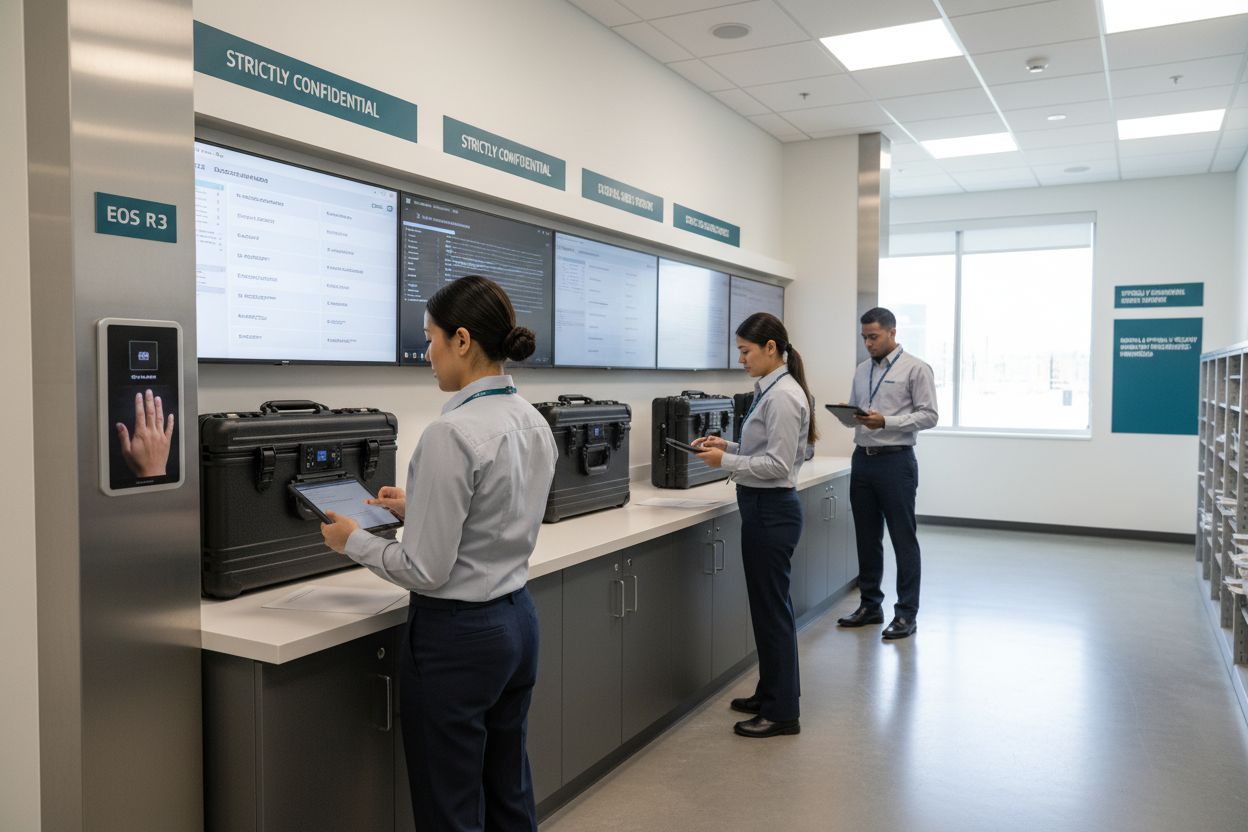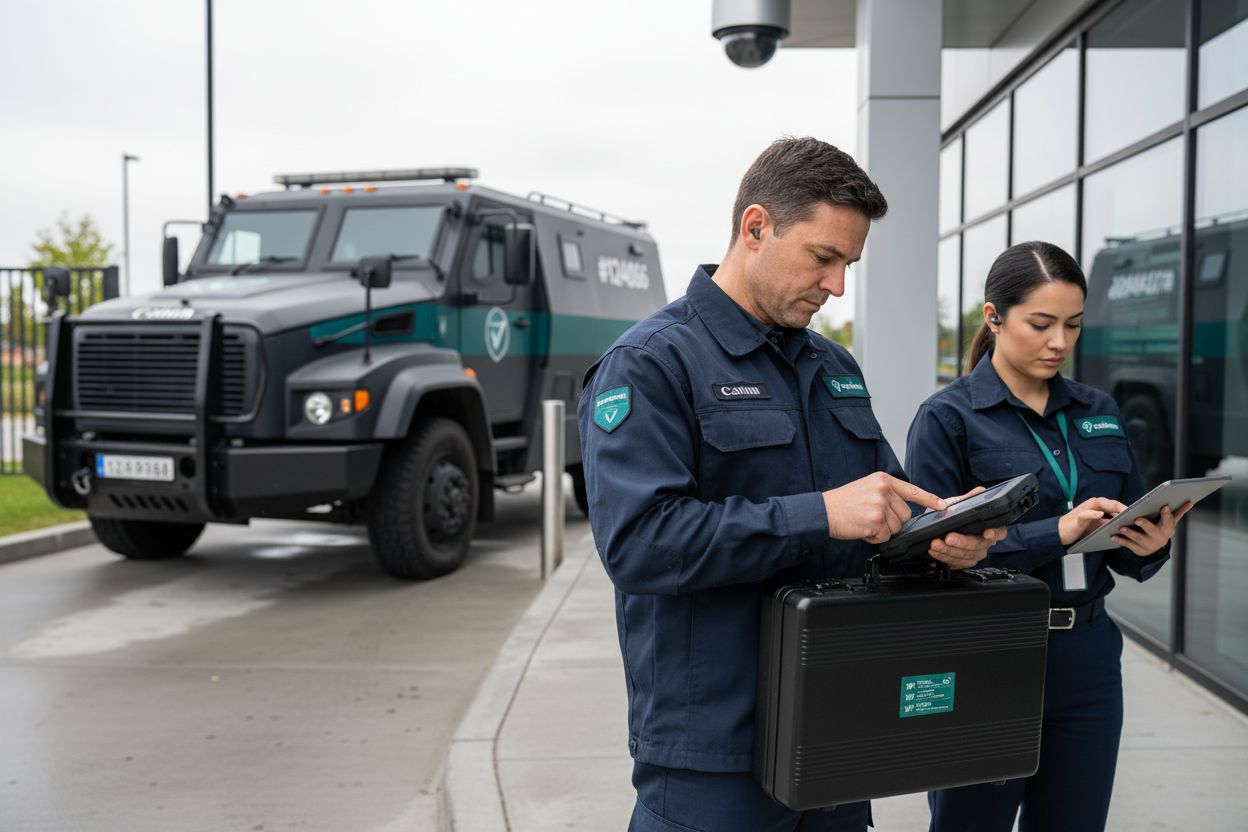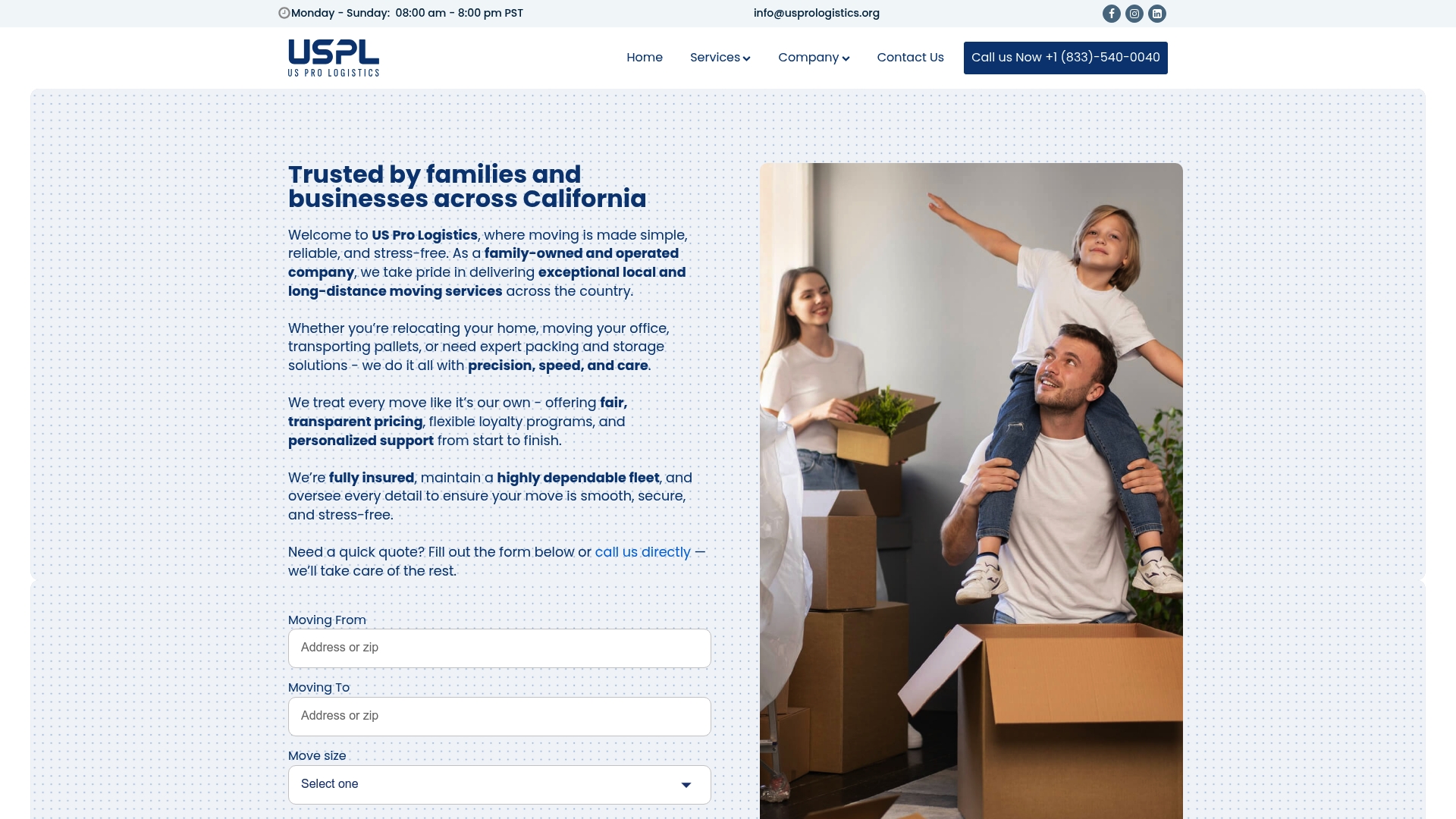
Did you know that over 80 percent of data breaches start with insecure document movement or poor tracking? As the way organizations handle sensitive materials changes, secure document transport has become more complex and vital than ever before. With digital and physical threats evolving, up-to-date security measures are now a must for anyone responsible for keeping confidential data safe through every step of its journey.
| Point | Details |
|---|---|
| Modern Security Ecosystem | Secure document transport is a multi-faceted approach that combines physical and digital security, including technologies like encryption, blockchain, and biometrics. |
| Proactive Risk Management | Organizations must adopt strategies that anticipate and mitigate risks, emphasizing continual assessment and adaptation of security measures. |
| Legal Compliance Essential | Maintaining comprehensive documentation and adhering to regulatory standards are critical for validating the secure journey of sensitive documents. |
| Investment in Technology | Organizations should prioritize investments in scalable technical solutions and staff training to enhance overall security and operational efficiency. |
Secure document transport in 2025 represents a sophisticated intersection of technology, legal compliance, and strategic risk management. At its core, this process involves protecting sensitive information during physical and digital transit, ensuring confidentiality, integrity, and traceability from origin to destination. Secure transport is no longer just about moving paper—it’s a comprehensive security ecosystem encompassing multiple layers of protection.
Modern secure document transport integrates advanced technologies like encrypted digital tracking, blockchain-verified chain of custody, biometric authentication, and end-to-end tamper-evident packaging. Organizations now expect solutions that provide real-time monitoring, instant verification, and comprehensive audit trails. Key features include:
For businesses and agencies handling sensitive materials, understanding secure storage solutions becomes critical. The landscape has transformed from basic physical security to a dynamic, technology-driven approach that anticipates potential vulnerabilities before they emerge. Security is now proactive, not reactive—with intelligent systems that can predict, prevent, and immediately respond to potential breaches or unauthorized access attempts.
Secure document transportation has evolved into a sophisticated array of methods designed to protect sensitive information across various contexts and industries. These methods range from traditional physical transport to cutting-edge digital transmission protocols, each tailored to specific security requirements and organizational needs.
Physical transportation methods include specialized courier services with enhanced security features:
Digital transportation methods leverage advanced technological protections:
For organizations seeking comprehensive security solutions, understanding storage unit security features provides additional context for protecting sensitive materials. These transportation methods represent a holistic approach to document security—combining technological innovation, rigorous protocols, and adaptive risk management strategies that go far beyond traditional document handling practices.
![]()
Here’s a comparison of physical and digital document transportation methods:
| Aspect | Physical Transportation | Digital Transportation |
|---|---|---|
| Security Technologies | Armored vehicles Tamper-evident packaging Biometric tracking |
End-to-end encryption Blockchain verification Secure cloud sharing |
| Chain of Custody | Courier logs Signed deliveries Physical checkpoints |
Digital audit trails Automated transfer records Cryptographic proofs |
| Compliance Challenges | Lost documents Tampering risk Manual errors |
Hacking threats Network breaches Regulatory updates |
| Typical Use Cases | Legal filings Diplomatic couriers Classified materials |
Sensitive contracts Medical records Financial data transfers |
Secure transport processes represent a meticulously designed workflow that transforms document movement from a simple transfer into a comprehensive security operation. These processes integrate multiple layers of protection, ensuring that sensitive information remains confidential, authenticated, and traceable throughout its entire journey.
The typical secure transport workflow involves several critical stages:
Technology plays a pivotal role in modernizing these processes. Advanced tracking systems use GPS, blockchain, and biometric technologies to create an unbreakable security envelope around transported documents. Each transfer generates comprehensive digital logs, ensuring complete transparency and immediate breach detection.
For organizations looking to enhance their document security infrastructure, understanding storage unit security features can provide additional insights into creating robust protection strategies. The goal is transforming document transport from a potential vulnerability into a precisely engineered, technologically fortified process.

Chain of custody represents the comprehensive documentation and tracking mechanism that legally validates the journey of sensitive documents from origin to final destination. In 2025, legal compliance has transformed from a simple procedural requirement to a complex, technology-driven ecosystem of accountability and transparency.
Key legal compliance requirements for secure document transport include:
The chain of custody process involves multiple critical legal considerations:
For organizations navigating these complex requirements, forensic documentation becomes paramount. Each transfer must generate comprehensive digital evidence that can withstand potential legal scrutiny, including precise timestamps, personal identifications, and secure transmission records.
Technological advancements like blockchain and advanced cryptographic techniques have revolutionized chain of custody management.
VIDEO:video_content] These systems provide immutable, tamper-proof documentation that not only meets legal standards but often exceeds them. [Understanding storage unit security features can offer additional insights into creating robust documentation strategies that protect both the document and the organization’s legal interests.
Secure document transportation involves navigating a complex landscape of potential risks, financial considerations, and operational challenges. Organizations must develop sophisticated strategies that balance comprehensive security with cost-effectiveness and operational efficiency.
Common risk factors in document transportation include:
Cost management strategies require a multi-dimensional approach:
The most frequent pitfalls organizations encounter stem from overlooking critical details. Inadequate staff training, outdated security protocols, and fragmented technological systems can create significant vulnerabilities. Proactive risk management means continuously evaluating and updating security approaches, understanding that document transportation is an evolving technological and regulatory landscape.
For organizations seeking to enhance their risk management strategies, understanding storage unit security features provides valuable insights into creating comprehensive, adaptive security frameworks. The ultimate goal is developing a resilient system that anticipates potential risks while maintaining operational flexibility and cost efficiency.
If you are concerned about keeping your sensitive documents safe during transit and want a partner who understands chain of custody, risk management, and compliance, US Pro Logistics is here for you. Our team uses advanced tracking systems and strict custody protocols, addressing the exact challenges outlined in our Secure Document Transport Guide. Whether you need armored transportation, encrypted tracking, or secure storage, our services are designed to guard your information from the very first step to delivery.

Do not risk costly mistakes or unexpected breaches. Trust a family-owned company specializing in high-stakes, technology-driven logistics. Visit US Pro Logistics now to discover how our secure relocation and storage solutions can give you peace of mind today. If you want a deeper look into our commitment to advanced security, learn more about storage unit security features and how we help you stay ahead of emerging threats. Your documents deserve the highest protection. Contact us for a personalized and secure plan that fits your needs right now.
Secure document transport refers to the processes and technologies used to protect sensitive information during its physical and digital transit, ensuring its confidentiality, integrity, and traceability.
Modern secure document transport utilizes technologies such as encrypted digital tracking, blockchain verification, biometric authentication, and end-to-end tamper-evident packaging to enhance security during transit.
Organizations can ensure compliance by establishing documented handover protocols, maintaining comprehensive digital logging, employing biometric authentication, and adhering to industry-specific regulations regarding document handling and transportation.
Common risks include unauthorized access during transit, data integrity compromise due to tampering, tracking failures leading to lost documents, compliance violations, and vulnerabilities in technology infrastructure.
USDOT 3664256 This number is required for any company that operates commercial vehicles in interstate commerce (across state lines). It helps identify and track the safety performance and compliance of transportation companies.
MC 1268070 This number is specifically for companies involved in the transportation of goods or passengers for hire across state lines. It’s necessary for carriers operating in the moving industry and ensures they are authorized to operate as interstate carriers.